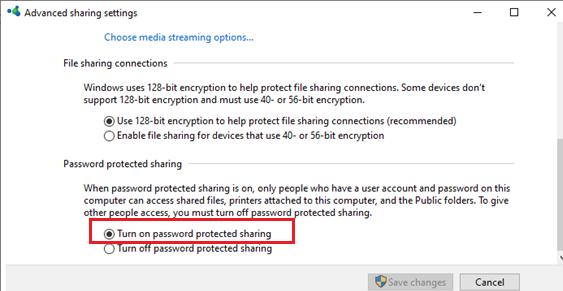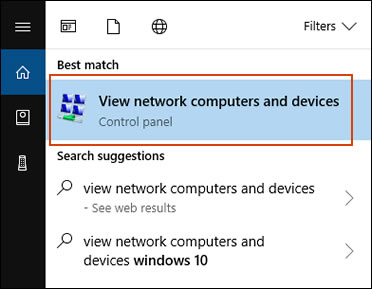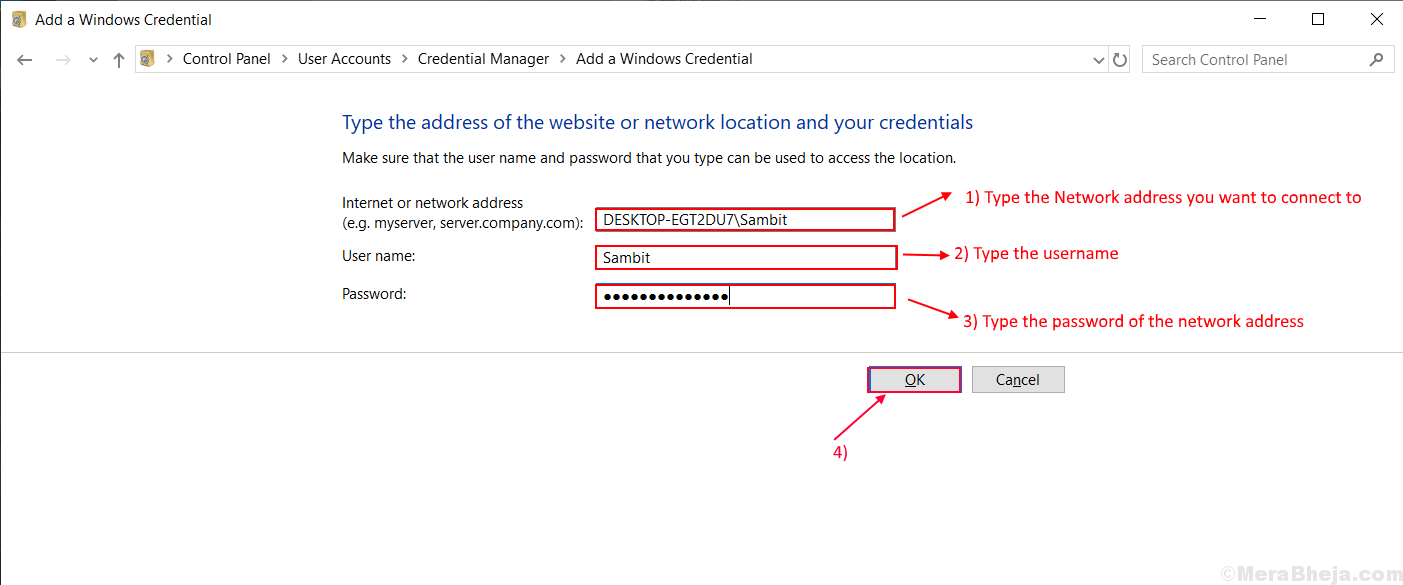

- #Have to remove password to allow network file sharing how to#
- #Have to remove password to allow network file sharing code#
- #Have to remove password to allow network file sharing Pc#
When you successfully generate the password with your Outlook then you need to enter it, every time you open your Outlook.Here you can put your old password if any, else insert a new password and again in the verify password and click OK to proceed.Now the overview of your outlook data file will be visible to you on your computer screen.Inside the Properties dialog box, selects the General tab and click the Advanced Button.Right-click on your email account and hit the Data File Properties option. Open your Outlook application 2010/2013/2016 and active your left pane.Means, a person without having credentials and authority to open your Outlook will not have the rights to open a password protected PST file without your concern. If your Outlook PST files are encrypted then it gives a trustworthy and improved secrecy level to your Outlook data. The password key protection is the new the prerogatives offered from the list of features that allow an MS Outlook user to protect their PST file from undesired access. The characteristics offered by this email client are innovative and gives its user a couple of opportunities apart from transferring emails. Microsoft Outlook application is suggested due to its manageable usage and simple interface.
#Have to remove password to allow network file sharing how to#
How to Add New Password to Outlook PST Files? So in this paper, I will tell you how to remove password from Outlook 2016/2013/2010. After you enter the password key, all the data of your PST file will become available to you.īut sometimes the password you used to protect the Outlook files is no longer available with you, either you forget it or someone else changed it without your concern. Later when you set a password to your Outlook Personal Storage Table archive, you’ll be provoked to insert it every time you want to Access Outlook application.
#Have to remove password to allow network file sharing Pc#
Despite if you allow sharing your PC or workstation with multiple users. It’s always been my view that if you have a good habit to key guard your Outlook PST files with a password then you are a smart person.
#Have to remove password to allow network file sharing code#
Save the code below to /etc/polkit-1/rules.d/les polkit."Looking for the methods to remove password from Outlook PST files, then you must go through this blog." Here is the wiki for configuring polkit rules for udisks/udisks2 in order to mount partitions by non-root (e.g.

Namespaces in operation, part 5: User namespaces. The best documentation I know of about user namespaces is an LWN article Other distros have similar settings, though often with slightly different names.

Eventually, FUSE filesystems will probably be allowed, but the most recent patches I could find don't cover block devices, only things like sshfs.įurther, many distro kernels have (for security reasons) defaulted to not allowing unprivileged users to use user namespaces for example Debian has a kernel.unprivileged_userns_clone that defaults to 0. This would allow them to mount filesystems, except that has been explicitly blocked except for a few virtual filesystems. In particular, with user namespaces, any user on the system can create their own environment in which they are root. Linux namespaces are a very lightweight form of virtualization (containers, to be more specific). The will-be-secure someday way: user namespaces If you don't want your users to have to remember sudo, you can do something like this in a script: #!/bin/bashĮxec sudo - "$0" rest of script goes here If you must, you could write your own script to do something similar, and invoke it through sudo-but you have to be really careful writing this script to not leave root exploits. Options here include udisks, udisks2, pmount, usbmount, They work by mounting in a subdirectory of /media only and by turning off set-user/group-id support via kernel options. The various desktop environments have actually already built solutions to this, to allow users to mount removable media. Remember that filesystems need not even be on a device, -o loop will mount a file which is owned (and thus modifiable) by the user.

Similar attacks could be pulled off over /etc/pam.d and many other places. Or possibly bind-mount ( mount -bind) over one of those two files. The user could mount a filesystem with a suid root copy of bash-running that instantly gives root (likely without any logging, beyond the fact that mount was run).Īlternatively, a user could mount his own filesystem on top of /etc, containing his/her own copy of /etc/shadow or /etc/sudoers, then obtain root with either su or sudo. You might as well give them root it's the same thing. Let any use run mount, e.g., through sudo. There are a couple approaches, some of them mostly secure, others not at all.


 0 kommentar(er)
0 kommentar(er)
